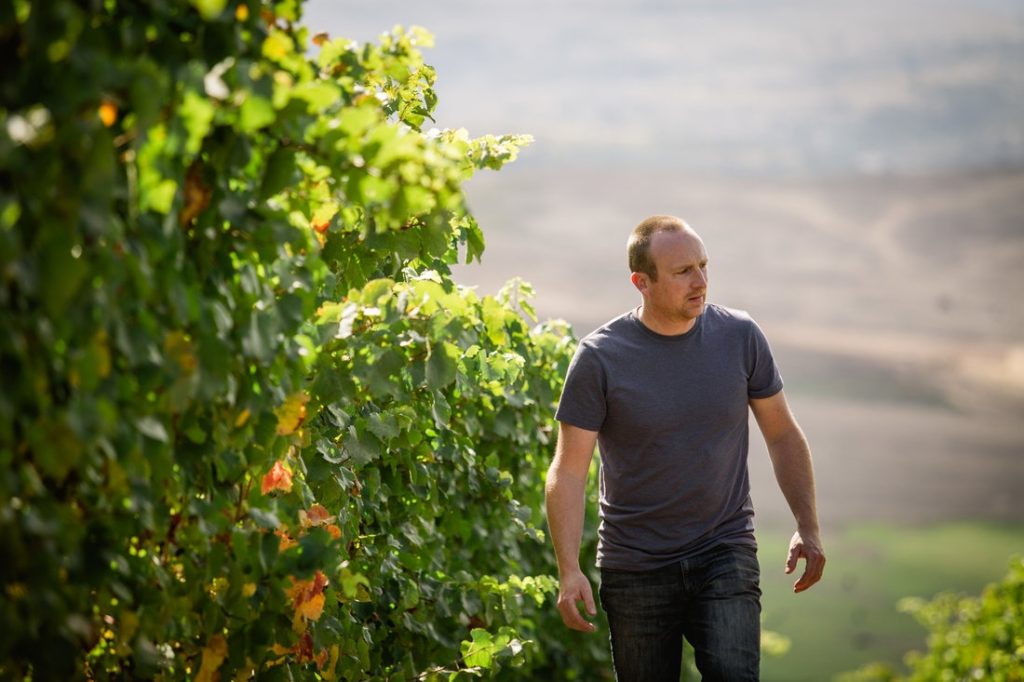
“Wine is older than history. Humans didn’t invent wine. We discovered it.” Philip Seldon
Many moons ago, I realized there was much more to winemaking than the romance associated with the industry. Pictures and Hollywood movies do tell a lovely story, but I believe words can break through the glossy perception and detail the true struggles endured before rootstock meets soil.
Though winemaking enjoys entrepreneurial woes like any new business, there is also a deeper history to it, something that sets it apart from other business types. Long before the land is bought and before the first vineyards are planted, there is a dream or a heritage. Whether a generational vintner or an enthusiastic businessman, there is a history that fuels the passion behind that first bottled wine.
There is no truer example of this than the story of Nick Glaetzer at GDF Winemakers and how they came to be known for their Pinot Noir. The story began when the Glaetzers left the Brandenburg region of Germany in 1888 and immigrated to the lush rolling hills of the Barossa Valley, the place many German settlers called their new home. So much so that Barossa-Deutsch would become a German dialect predominantly spoken throughout that region in South Australia. The Glaetzer name quickly became associated with Barossa Shiraz, since the climate and the soil favoured this complex dark-skinned grape variety.
Nick’s father, Colin Glaetzer, and his Uncle John were both actively involved in the industry. John was Wolf Blass’ winemaker from its beginning, and he became famous for his big, ripe Black Label wines. Uncle John’s motto was, “No wood, no good.” This was attributed to the full flavour of red wine, and it stuck with Nick.
Colin (identical twin to John) managed to escape South Australia after graduating from Roseworthy Agricultural College. He headed to the Hunter Valley, Riverland, and finally into the UK trade with Avery’s Wine Merchants in Bristol in the early 70’s. During this time, and while working a vintage with Remoissenet Negotiants in Beaune, his father picked up an appreciation for the wines of France, particularly from the Rhône and Burgundy. So it was that only on special occasions his dad would pull out a great Burgundy or Rhône. Growing up, this appreciation rubbed off on Nick.
After working in the Languedoc and Pfalz wine-growing regions of Europe, a young Nick returned to Australia and began working at Leeuwin Estate in Margaret River. One night in 2004, when the day was done and the mind at ease, the winemaker pulled out a bottle of wine from a “mystery cupboard” for a blind tasting. Everyone there thought it was a good Premier Cru from Côte du Beaune. It was, in fact, a Pinot Noir from Tasmanian winemaker Andrew Hood. This revelation made an impact on Nick and gave birth to an intense curiosity. A seed had been planted, and he wanted to know more.
For a while, he contemplated returning to Europe. He wanted to make real pinot, but believed that nowhere in Australia would be capable. Before setting off, he decided to mail Andrew Hood and ask him for a job. When he got a favourable reply, he decided it was time to break the news. When he announced to the family in 2005 that he planned to move to Tasmania to make pinot noir, it was Uncle John who pulled him aside and said, “Drinking pinot is like drinking light beer. You’re a bloody dreamer”. Nick viewed himself as the black sheep of the family, but he had to do this. He went to Tasmania and worked a couple of vintages, including a brief stint in Burgundy, before Andrew gave him a full-time role in 2008. In lieu of a full salary, he gave Nick space to make his own wine.
Initially, he only wanted to make pinot, though he experienced some incredible Tasmanian shiraz by Alain Rousseau from Moorilla Estate. He sought out Shiraz, which is still incredibly rare in Tasmania. He sourced grapes from contract growers and began experimenting. From 2008 to 2012, he used winery space and equipment at Frogmore Creek, where he worked closely with Andrew Hood and Alain Rousseau. When he left Frogmore, he leased space from the Moorilla estate, which he kept until last year. In 2013, he had purchased an old ice factory that used to supply ice to fishing boats on Hobart’s harbours. It was an urban warehouse, double brick, and built into an old quarry. It was the perfect space for a wine cellar.
The time had come for Nick to fully dedicate himself to GDF Winemakers. Since the demand for Tasmanian grapes (and wine) meant a restriction on his intended expansion, Nick decided to plant a 12ha vineyard in the Coal River valley. This was not just to secure his own supplies, but also to become a traditional grower and wine maker. Finally, this year, he could install tanks and equipment in the warehouse space. And this brings us back to the present tense. The stage is set for brilliance. This is normally where the story starts.
So what is the purpose of this history lesson? Is this not a wine column? I aspire to showcase the beating heart behind the finished product. It’s not easy to create a sense of history without sharing it. I believe passion is the evidence of history, and any winemaker will admit, one simply cannot make wine without passion. It’s the driving force that makes them hunt for white pepper and spice tones, until they eventually uncover the charcuterie and black olive traits in their shiraz.
This article first appeared in Forty South Tasmania

